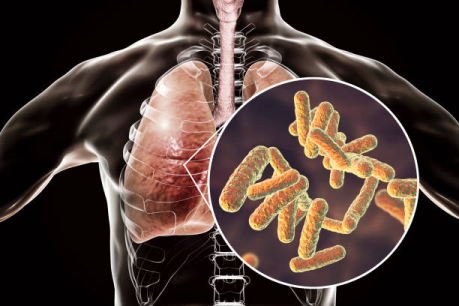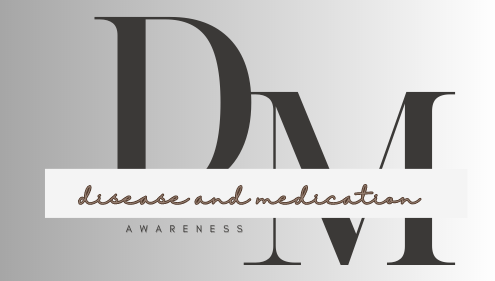Tuberculosis (TB) is a largely contagious bacterial complaint that primarily affect the lungs but can also impact other corridors of the body. It’s caused by the bacterium Mycobacterium tuberculosis. TB has been a significant global health concern for centuries and remains a leading cause of morbidity and mortality worldwide.
Causes of Tuberculosis (TB)
Tuberculosis is primarily transmitted through the air when an infected person coughs, sneezes, or addresses. The bacteria- containing droplets can be gobbled by individualities in close propinquity, leading to infection. still, not everyone infected with the bacteria develops active tuberculosis; the vulnerable system can frequently control the infection in an idle state. Factors that increase the threat of TB progression include a weakened vulnerable system, malnutrition, and other underpinning health conditions.
HIV/ AIDS is a major threat factor for developing active tuberculosis. The vulnerable system of people with HIV is compromised, making them more susceptible to TB. Also, medicine- resistant strains of Mycobacterium tuberculosis have surfaced, posing challenges to TB control and treatment sweats.
How is TB transmitted?
TB is primarily transmitted through the air when an infected person coughs or sneezes, releasing respiratory droplets containing the bacteria Mycobacterium tuberculosis.

Stages of Tuberculosis (TB)
Latent TB Infection( LTBI): In latent TB infection, a person is infected with the bacteria but doesn’t show symptoms of active complaint. The vulnerable system is suitable to control the infection, precluding the bacteria from multiplying and causing illness. individuals with idle TB aren’t contagious, and they can not spread the infection to others. Still, latent TB can come active if the vulnerable system becomes compromised, leading to the development of active TB complaints.
Active TB Disease: Active TB occurs when the bacteria overcome the vulnerable system’s defenses and multiply, leading to characteristic complaints. Active TB is contagious, and individualities with active pulmonary TB can spread the bacteria to others through the air when they cough, sneeze, or talk. Prompt opinion and treatment are essential to help the spread of TB and to effectively treat the infection.
Extrapulmonary TB: Extrapulmonary TB refers to TB that affects the corridor of the body other than the lungs. While pulmonary TB is the most common form, TB can also affect organs similar as the lymph bumps, bones, joints, gastrointestinal tract, genitourinary system, and the central nervous system. Symptoms of extrapulmonary TB vary depending on the affected organ but can include swelling, pain, and dysfunction of the affected area. Extrapulmonary TB isn’t as contagious as pulmonary TB, but it can still be a serious and potentially life- hanging condition. It’s important to note that individualities with latent TB can be specified for preventative treatment to reduce the threat of developing active TB complaints.
TB is a treatable and curable infection, and early discovery and applicable treatment are pivotal for successful issues and precluding the spread of the complaint.
Symptoms of Tuberculosis (TB)
The symptoms of tuberculosis can vary depending on whether the infection is latent or active and may also differ based on the affected organs.
● Symptoms of Latent TB Infection:
- There are often no symptoms.
- The bacteria are present in the body but are not causing illness..
● Symptoms of Active TB Infection:
- Persistent cough that may produce bloody or discolored sputum.
- Fatigue and weakness.
- Weight loss.
- Fever and chills, especially in the evening.
- Night sweats.
- Loss of appetite.
- Chest pain or tightness.
● Extrapulmonary TB:
- TB can affect other organs besides the lungs.
- Symptoms depend on the organ involved. For example, TB in the spine may cause back pain, while TB in the kidneys may lead to blood in the urine.

How can we prevent TB?
We can prevent TB by promoting and ensuring wide vaccination, especially in high- threat populations, maintaining good respiratory hygiene, and relating to and treating latent TB infections beforehand through regular screenings. Also, perfecting living conditions and addressing social determinants of health can contribute to TB prevention.
Diagnosis of Tuberculosis (TB)
Diagnosing tuberculosis (TB) involves a combination of clinical evaluation, laboratory tests, and imaging studies. Then are the common styles used for TB opinion.
1) Medical History and Physical Examination: A healthcare provider will review the case’s medical history, including any symptoms such as patient cough, weight loss, fever, and night sweats. A physical examination may be conducted to check for signs similar as enlarged lymph bumps or abnormal lung sounds.
2) Tuberculin Skin Test( TST) or Mantoux Test: A small quantum of TB protein( tuberculin) is fitted under the skin, generally in the forearm. The response is assessed 48- 72 hours later. A positive response indicates exposure to the TB bacteria but doesn’t inescapably confirm active TB complaints.
3) Interferon- Gamma Release Assays( IGRAs): Blood tests, similar as the QuantiFERON- TB Gold test or the T-SPOT.TB test, measure the vulnerable response to TB bacteria. These tests are more specific than the tuberculin skin test.
4) Chest X-ray: X-rays can reveal abnormalities in the lungs that may be reflective of TB. While not definitive for diagnosing TB, casketX-rays can give important information about the extent and position of the complaint.
5) Sputum Smear Microscopy: Microscopic examination of a case’s foam( numbness coughed up from the lungs) is done to detect the presence of acid-fast bacilli( AFB), which are characteristic of Mycobacterium tuberculosis, the bacterium causing TB.
6) Chest CT Scan: Computed tomography( CT) reviews may be used for a more detailed evaluation of lung abnormalities seen on a chest X-ray.
7) Culture and Molecular Tests: Cultivating the bacteria from foam or other samples can confirm the presence of Mycobacterium tuberculosis and identify the strain. Polymerase Chain response( PCR) tests can fleetly detect TB DNA and are more sensitive than smear microscopy.
8) Drug Susceptibility Testing( DST): This test helps determine which medicines will be effective in treating the specific strain of TB, especially important for multidrug- resistant TB cases.
9) Biopsy: In some cases, a biopsy of the affected towel(e.g lymph bumps) may be necessary for opinion.
It’s important to note that a combination of these tests is often used to increase diagnostic accuracy.
Treatment of Tuberculosis(TB)
The treatment of tuberculosis( TB) involves a combination of antibiotics taken over an extended period. The standard TB treatment authority is designed to eradicate the bacteria causing the infection and help the development of medicine-resistant strains. The most common and effective medicines used for treating TB are isoniazid, rifampin, ethambutol, and pyrazinamide. Then there is an overview of the typical treatment approach for TB.
1) Drug Regimen
* First- Line Drugs: The primary medicines used in the original phase of TB treatment are isoniazid, rifampin, ethambutol, and pyrazinamide. This phase, known as the intensive phase, generally lasts for 2 months and aims to rapidly reduce the bacterial cargo.
* Continuation Phase: After the intensive phase, isoniazid and rifampin are continued or fresh 4 to 7 months to insure complete eradication of the bacteria.
2) Directly Observed Therapy( DOT): TB treatment frequently involves direct observation of drug administration by a healthcare professional or trained individual to insure that cases take their specifics as specified. This helps improve adherence to the treatment authority and reduces the threat of developing medicine resistant strains.
3) Monitoring and Follow- up: Regular monitoring is essential to assess the case’s response to treatment and identify any adverse goods.
4) Drug- Resistant TB: In cases of drug- resistant TB, a more extended and complex treatment regimen may be necessary, frequently involving second- line medicines that are more potent but may have further side effects. The treatment duration for drug- resistant TB can range from 9 months to 2 years.
Tuberculosis medication side effect
Like other drugs tuberculosis medicines also have some side effect .
Common side effect of isoniazid include:
- Peripheral neuropathy (tingling or numbness in the extremities) Hepatotoxicity (liver damage)
- Hepatotoxicity (liver damage)
Common side effect of rifampin include:
- Hepatotoxicity
- Gastrointestinal upset (nausea, vomiting)
Common side effect of ethambutol include:
- Optic neuritis (inflammation of the optic nerve), leads to blurred or changed vision)
- Gastrointestinal upset
- Joint pain
Common side effect of Pyrazinamide include:
- Hepatotoxicity
- Hyperuricemia (elevated levels of uric acid in the blood) leads to gout attacks
- Gastrointestinal upset
Patients undergoing TB treatment should communicate any adverse effects to their healthcare provider instantly. In some cases, adaptations to the treatment plan may be necessary to manage side effects effectively. Also, healthcare providers may recommend supplements or fresh medications to offset specific side effects, similar to the use of pyridoxine to help supplemental neuropathy with isoniazid.

Please provide me with more details on the topic
I want to thank you for your assistance and this post. It’s been great.
Thank you for your post. I really enjoyed reading it, especially because it addressed my issue. It helped me a lot and I hope it will also help others.
Thanks for posting. I really enjoyed reading it, especially because it addressed my problem. It helped me a lot and I hope it will help others too.
Thank you for your help and this post. It’s been great.